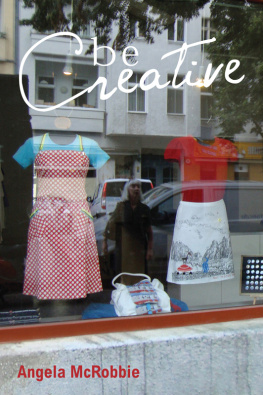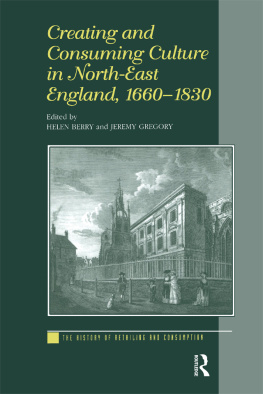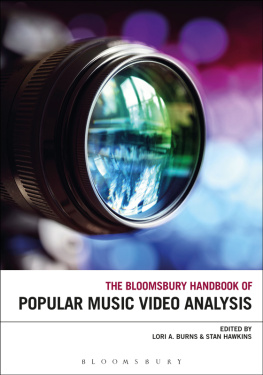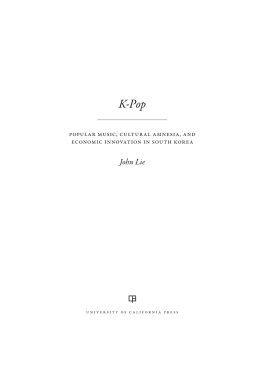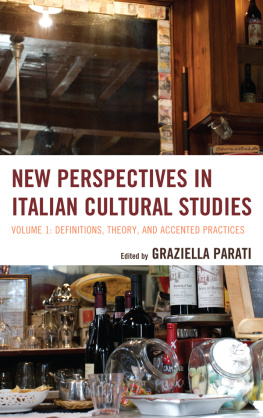IN THE CULTURE SOCIETY
How do different artistic and cultural practices develop in the contemporary consumer culture? What do we mean by the aestheticization of everyday life? In this new collection of essays Angela McRobbie considers the social consequences of cultural proliferation and the social basis of aesthetic innovation.
In the wake of postmodernism, McRobbie offers a more grounded and even localized account of key cultural practices, from the new populism of young British artists, including Damien Hirst and Tracey Emin, to the underground London sounds of drum n bass music; from the new sexualities in girls and womens magazines, to the dynamics of fashion production and consumption. Throughout the essays the author returns to issues of livelihoods and earning a living in the cultural economy, while at the same time pressing the issue of cultural value.
Arguing for a new materialism in cultural studies, McRobbie also focuses attention on cultural producers including artists and musicians, designers, editors and journalists. In the Culture Society provides a new direction in cultural studies as well as a vigorous defence of the field.
Angela McRobbie is Professor of Communication at Goldsmiths College, London. She is the author of Postmodernism and Popular Culture and British Fashion Design.
IN THE CULTURE SOCIETY
Art, fashion and popular music
Angela McRobbie
First published 1999
by Routledge
2 Park Square, Milton Park, Abingdon, Oxon, 0X14 4RN
Simultaneously published in the USA and Canada
by Routledge
270 Madison Ave, New York NY 10016
Routledge is an imprint of the Taylor & Francis Group
Transferred to Digital Printing 2009
1999 Angela McRobbie
All rights reserved. No part of this book may be reprinted or reproduced or utilized in any form or by any electronic, mechanical, or other means, now known or hereafter invented, including photocopying and recording, or in any information storage or retrieval system, without permission in writing from the publishers.
British Library Cataloguing in Publication Data
A catalogue record for this book is available from the British Library
Library of Congress Cataloguing in Publication Data
A catalogue record for this book has been requested
ISBN 0415137500 (pbk)
ISBN 0415137497 (hbk)
Publishers Note
The publisher has gone to great lengths to ensure the quality of this reprint but points out that some imperfections in the original may be apparent.
CONTENTS
The author and publishers would like to thank the following for kind permission to reproduce the articles in this collection.
first appeared in Media, Culture and Society, vol. 18, 1996. Reproduced by permission of the publishers.
first appeared in Feminist Review, no. 55, Spring 1997. Reproduced by permission of the publishers.
, revised and updated here, first appeared in J. Curran, D. Morley and V. Walkerdine (eds) Cultural Studies and Communications, London: Edward Arnold, 1996. Reproduced by permission of the publishers.
, edited here, first appeared in K.S. Chen and D. Morley (eds) StuartHall: Critical Dialogues in Cultural Studies (Comedia), New York: Routledge Inc, 1996. Reproduced by permission of the publishers.
first appeared in M. Ferguson and P. Golding (eds) Cultural Studies inQuestion, London: Sage, 1997. Reproduced by permission of the publishers.
first appeared as a review article in Media, Culture and Society, vol. 17, 1995. Reproduced by permission of the publishers.
first appeared in Soundings: A Journal of Culture and Politics, issue 3, 1996. Reproduced by permission of the publishers.
first appeared in Soundings: A Journal of Culture and Politics, issue 9, 1998. Reproduced by permission of the publishers.
The process of gathering together a collection of essays, published over the last two to three years in a diverse range of journals, is usually accompanied by a sense that there is, or ought to be, an underlying theme. These articles were all written while I was completing a study of young British fashion designers. Arranging them now into an order for publication, it is clear that many of them deal with the broader issues I was thinking about while focussing more specifically on fashion. The future of work in the creative sector has been a recurrent interest, as has the growth of self-employment, an increasing part of which is cultural work. The social consequences of this shift towards a kind of work which appears to be particularly rewarding on the grounds of its emphasis on creativity, threads its way through many of these essays. Suggesting that in Britain by the late 1990s All the Worlds a Stage, Screen or Magazine (), is not merely a polemical point. However, there is much more empirical work to be done in this area and several of my essays simply point the way forward.
If the aestheticisation of everyday life provides an over-arching theme, so also does the idea of after postmodernism. By this I do not mean some major current of thinking which has emerged to replace postmodernism. Instead I have found myself looking back at postmodernism as a body of writing which, despites its critique of the grand narratives of modernity, came to occupy the position of a meta-narrative itself. Postmodernism was expansive, it was a big picture. There remains a sharp sense now, some years later, that postmodernism was primarily a Western phenomena which latched onto notions of hybridity and movement, uncertainty and loss of faith, but which left relatively untouched and intact those people who remained behind. These were those who did not have the basic resources to become part of the cosmopolitan world, who could not travel, or who could not travel back to where they had come from, or whose relation to the flickering world of television images meant watching soap operas while engaging in homeworking, sewing parts of clothing together, night and day, for sweatshop wages, or working, again for low pay, in the new service sector, as security guards or petrol station attendants. This sense that the aesthetic force of postmodernism did not fully acknowledge the way in which these changes were registered at ground level has sent me back towards a new kind of materialism, one which attempts to connect the large scale changes with the small scale cultural economies and livelihoods upon which so many people now depend for a living.
There are four other things to be said about this collection of articles. First, that they came about because I was drawn by a sociological interest to phenomena like the new girls and womens magazines, such as Sugar and More!, which seemed to go overboard to embrace an unprecedented degree of sexual frankness in their pages. It was sociological curiosity which drew me to these forms and encouraged me to ask what was going on here and how it could be explained within the framework of feminism and so-called post-feminism. Likewise, it was almost impossible for me not to be interested in the new forms of dance music which, from the early 1990s, began to resonate across the airwaves. I was interested in how music like that of Talvin Singh, Tricky and Goldie incorporated small slices of black and Asian social history, from across the black Atlantic, from Asia, the Caribbean, New York and Britain, into their distinctive sounds. They each did this in very different ways but in all three there was an extraordinary energy which seemed to emerge from the creative possibilities made available by new technology and its application to music.


